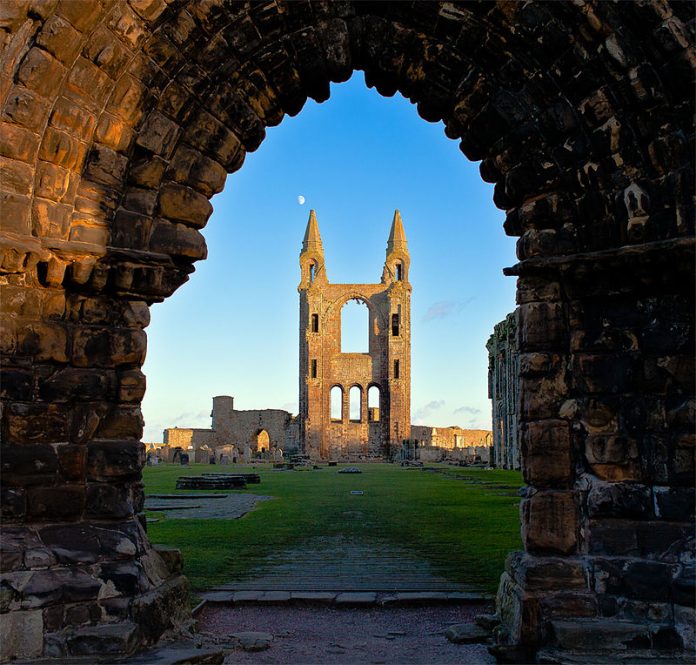Today is the feast of Saint Andrew, Apostle, brother of Saint Peter, patron of Scotland, Russia, Ukraine and Greece, for reasons that are somewhat historically tenuous. But, as Belloc says, behind every legend, there is always some truth.
Of one such, it is told that the ship upon which Andrew was sailing veered off course, and landed on what is now Saint Andrew’s on the east coast of Scotland, on the site of the town that now bears his name (it must have been quite the gale). Saint Andrew’s is famous now for its golf course and the ruins of its cathedral, whose prized religious and liturgical treasures were dispossessed in 1559, after the outlawing of the Mass, and the building left to fall into ruin in the wind and rain. Its beautiful stone relics, showing it to be the largest church ever built in Scotland (390 feet long), still stand as a testament to the state of faith in the once faithful land, where I happened to be born.
The Faith itself was ruined spiritually by the ravages of the austere anti-Catholic Calvinism of the apostate priest John Knox and the subsequent inevitable slide into secularism, hedonism and the vapid religion of soccer or, if you will, football. I was glad to discover that the cathedral was longer than a football pitch, a sign at least of something.
But what was might be again, for the Faith never dies; there are always embers and pockets that may be fanned into flame, and there are signs here and there of such a resurgences in Scotland, upon which I will write soon.
As far as the origin of Saint Andrew’s patronage goes, here is the Wikipedia take on the matter:
According to legend, in 832 AD, Óengus II led an army of Picts and Scots into battle against the Angles led by Æthelstan, near modern-day Athelstaneford East Lothian. The legend states that he was heavily outnumbered and hence whilst engaged in prayer on the eve of battle, Óengus vowed that if granted victory he would appoint Saint Andrew as the Patron Saint of Scotland. On the morning of battle white clouds forming an X shape in the sky were said to have appeared. Óengus and his combined force, emboldened by this apparent divine intervention, took to the field and despite being inferior in numbers were victorious. Having interpreted the cloud phenomenon as representing the crux decussata upon which Saint Andrew was crucified, Óengus honoured his pre-battle pledge and duly appointed Saint Andrew as the Patron Saint of Scotland.
Saint Andrew, like his papal brother, considered himself unworthy to die on the same cross as his Saviour; hence the x-shaped cross that is still his symbol, now on the flag of Scotland, the brave and glorious.
Sancte Andreas, ora pro nobis!











